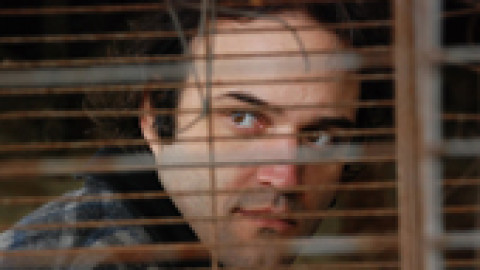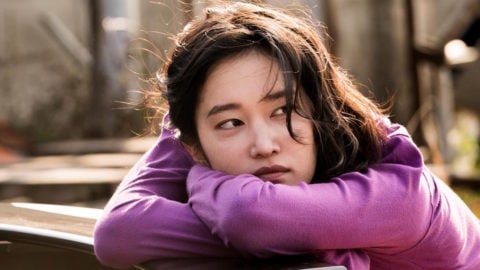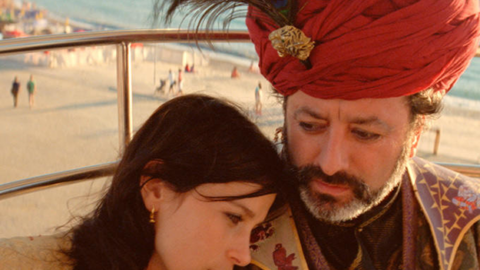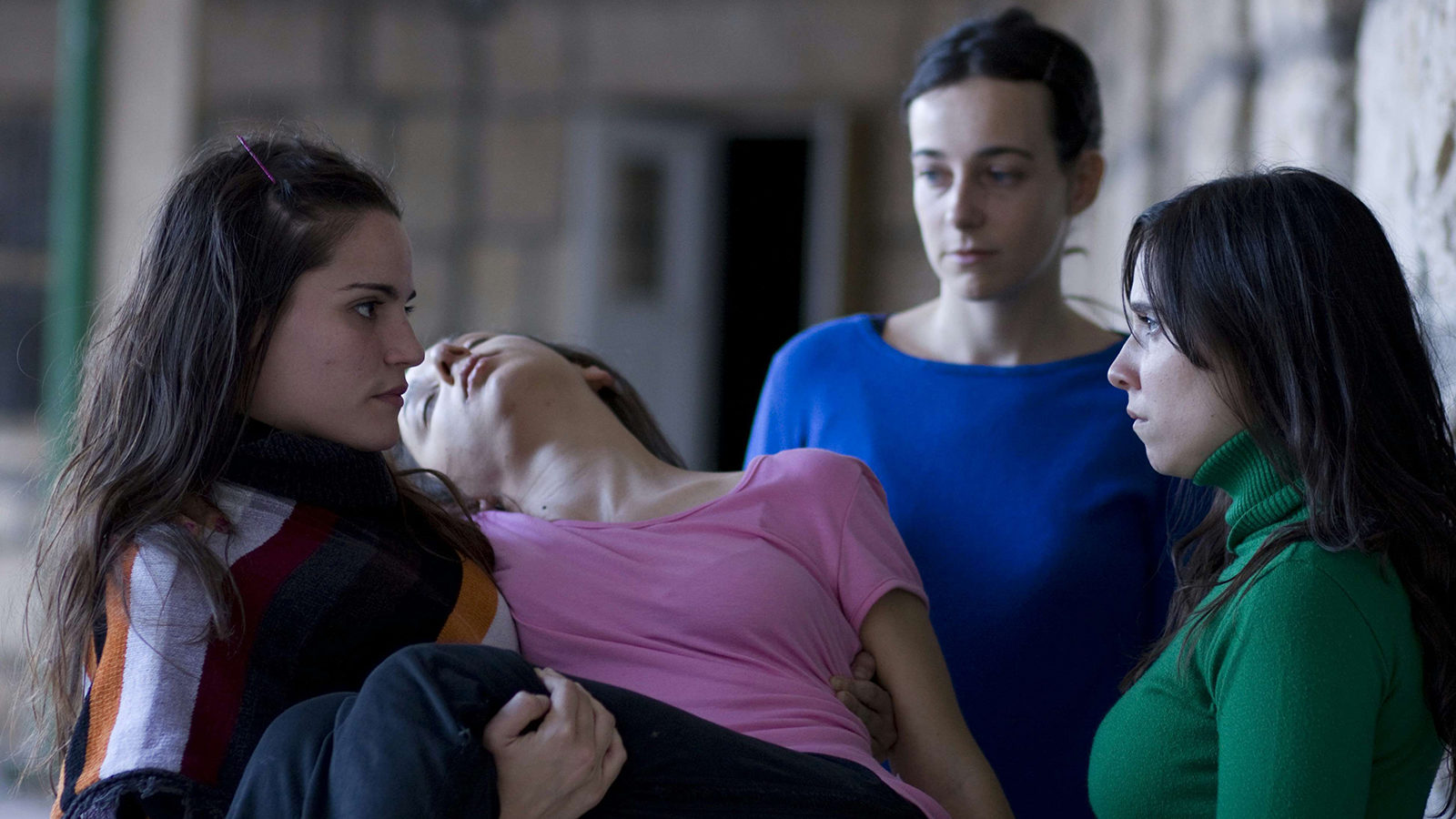
The Long View
Any discussion of Mariano Llinás’s La Flor—a decade in the making and 868 minutes in the watching—inevitably begins with its monumentality. It is no longer uncommon, in a digital age that has introduced the concept of “binge viewing,” for any of us to consume vast amounts of narrative media in a single sitting, but duration in cinema remains its own particular kind of collective, reflexive act: among other things, the film becomes about the experience of watching it. Duration has a variety of uses, of course, and Llinás’s conception of the epic shares little with the immersive long-take techniques of a Lav Diaz or a Béla Tarr. Closer in spirit are the films of Jacques Rivette, where the narrative games on screen function as a spell cast on characters and viewers alike. Indeed Rivette’s description of the role of fiction in his own magnum opus, Out 1 (1971)—as a force that “swallows everything up”—applies here.
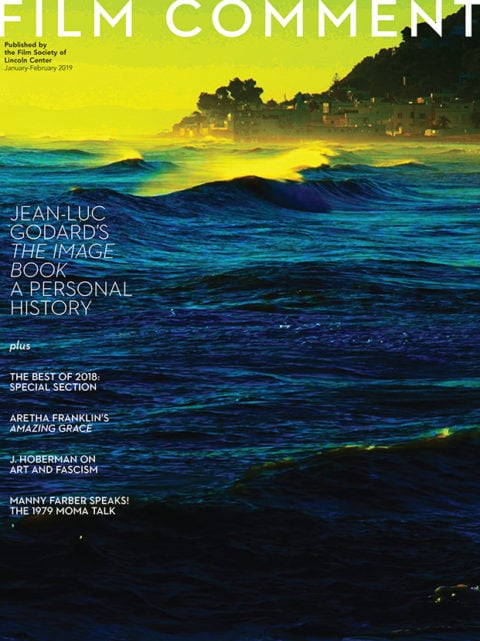
The realist tendency that dominates the contemporary festival circuit often registers as a fear of stories, an inclination to minimize or suppress narrative machinations so as to avoid indulgence or implausibility. The recently fashionable phenomenon of hybridity, a staple of 21st-century cinema, largely revolves around an attraction to the real, whereby fiction draws on the restless energies of documentary. Relatively few are the filmmakers who have sought to reassert the possibilities and pleasures of drama. They include Miguel Gomes, who reimagined actual events in austerity-era Portugal as modern and period fables in Arabian Nights (2015), and Llinás’s fellow Argentine Matías Piñeiro, who uses fragments of Shakespearean scenarios as the catalytic spark for his own intricate enchantments. Llinás planted his own outsize stake in the soil of fiction with the four-hour-plus Extraordinary Stories (2008), a thicket of stories within stories that follow three main characters over 18 chapters and dozens of subplots involving scores of secondary figures, locations on two continents, multiple cross-pollinated genres, telenovela-ready cliff-hangers, and a live lion. Its protagonists, given the task of making narrative sense of situations that lack obvious meaning, are effectively acting out an allegory on the uses and abuses of fiction.
La Flor is an even more elaborate adventure in scale and duration, an exploration of the possibilities of fiction that lands somewhere close to its outer limits. Llinás himself shows up at the start to preview the six disparate episodes that await, illustrating the film’s structure with a sketch of the titular flower (though with its four upward spikes, it also has the devilish cast of a pitchfork). The first four episodes lack endings, he tells us, and each belongs to a different genre: a mummy B-movie, a musical of sorts “with a touch of mystery,” a spy thriller, and a fourth that is hard to describe (it begins as a self-parodic meta-fiction and evolves into… something else entirely). The fifth, a remake of a French classic (it turns out to be Renoir’s A Day in the Country), is self-contained. And the final one, based on the diary of a woman held captive by Indians in the 19th century, has an ending but begins in medias res. All the episodes but one feature the same four remarkable actresses—Elisa Carricajo, Valeria Correa, Pilar Gamboa, and Laura Paredes—and they range widely in style and length. (Episode Three alone, in which each principal character is granted a long nested origin story, runs more than five hours.)

If Extraordinary Stories suggested a literary heritage—one detects in its formal play traces of Borges, Cortázar, Bolaño—Llinás here has his sights set on the history of the cinema, from its early innocence to its apparent death throes to the amorphous beyond that is the current moment. He has described La Flor as a fictional adaptation of Godard’s Histoire(s) du cinéma and the impulse is comparably encyclopedic, the tone similarly elegiac and defiant. It’s fitting that the film starts with a mummy movie: in its heartfelt, head-on approach to genre, La Flor can be seen as an attempt to reanimate a succession of dead or dying forms. Many films in one, it thrives on multiplicity and abundance. Llinás pulls out every storytelling trick in the book, reveling in the countless ways narrative information can be framed, withheld, and transmitted: flashbacks, ellipses, variously reliable voiceover narrations, dialogue in multiple languages, title cards, musical numbers, intermissions.
In love with the artifice of storytelling, La Flor also celebrates the uncanny power of fiction to generate its own reality. In more ways than most movies, it serves as a record of time passing: Godard’s observation that every fiction film is a documentary of its actors rings especially true here. Granted, all notions of beginnings and endings become fuzzy after 14 hours, but Llinás’s pointed aversion to endings—with four abridged episodes and 40 minutes’ worth of closing credits, a very long non-goodbye—gets at the heart of his project. It was none other than Borges who noted that “the solution of a mystery is always less impressive than the mystery itself.” For Scheherazade, whom Rivette called the “patron saint” of storytellers, deferred endings were a means of cheating death. As Llinás’s actors—brilliant co-conspirators, perfectly attuned to his wavelength—move through a revolving door of roles, there emerges the dizzying sense that anyone can play any part, that every story remains to be told. Romantic to the core, La Flor is a declaration of faith in the medium, a showcase of its infinite flexibility. One of Bresson’s most piercing statements from late in his life comes to mind: “The cinema is immense. We haven’t done a thing.” Can a 14-hour movie seem unfinished? The mere fact of La Flor’s existence is cause for amazement, but even more astonishing is the impression that it is just the tip of an iceberg—that it could keep going, a never-ending film, to be continued in perpetuity.
Dennis Lim is the director of programming at the Film Society of Lincoln Center.



